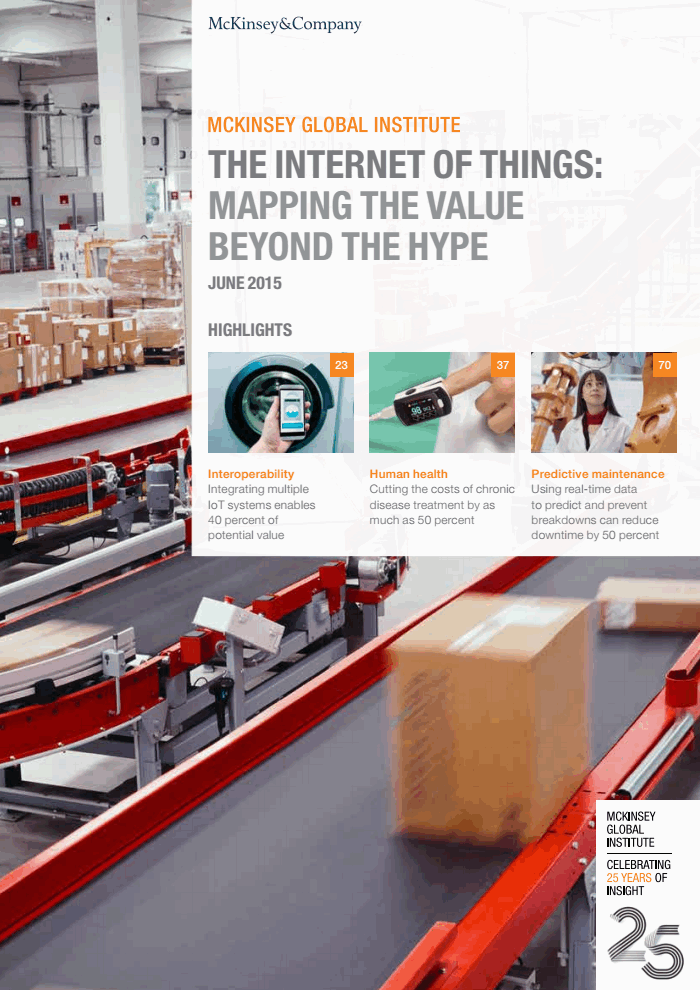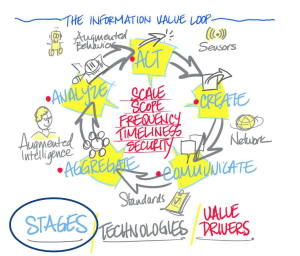When the New York Times weighs in on an Internet of Things phenomenon, you know it’s about to achieve mainstream consciousness, and that’s now the case with what I like to call “precision agriculture,” enabled by a combination of IoT sensors in the fields and big data analysis tools.
The combination is potent and vital because an adequate supply of safe food is so central to our lives, and meeting that need worldwide depends increasingly on small farms, which face a variety of obstacles that big agribusinesses don’t encounter.
Chris Rezendes, a partner in INEX Advisors, who’s been particularly active with IoT-based ag startups, pointed out to me in a private communication that the problem is world-wide, and particularly matched to the IoT’s capabilities, because food security is such a ubiquitous problem and because (surprisingly to me) the agricultural industry is dominated more by small farms, not agri-biz:
“… most people do not have an understanding of the dimensions of food security beyond calories. Feeding the world demands more than just calories. It demands higher nutritional quotient, safety, affordability and accessibility.
“And all that translates in many models into a need for a more productive, profitable and sustainable small ag industry.
“Most folks do not realize that that there are nearly 700 million farmers on the planet. In the US alone, we have 2.3 million ag operations (and, BTW, the number of millennials entering the field is nearly doubling each year) — and that is not counting processing, packaging, distribution, or anything related to fisheries. Most of those farms are pretty small … less than 500 acres on average, and when you strip out the conglomerates and the hobbyist farmers, you are left with hundreds of thousands of small businesses averaging nearly $4 million per year in revenue.”
As reported by The Times‘ Steve Lohr, Lance Donny, founder of ag technology start-up, OnFarm Systems, said the IoT’s benefits can be even greater outside the US:
“.. the most intriguing use of the technology may well be outside the United States. By 2050, the global population is projected to reach nine billion, up from 7.3 billion today. Large numbers of people entering the middle class, especially in China and India, and adopting middle-class eating habits — like consuming more meat, which requires more grain — only adds to the burden.
“To close the food gap, worldwide farm productivity will have to increase from 1.5 tons of grain per acre to 2.5 tons by 2050, according to Mr. Donny. American farm productivity is already above that level, at 2.75 tons of grain per acre.
“’But you can’t take the U.S. model and transport it to the world,’ Mr. Donny said, noting that American farming is both highly capital-intensive and large scale. The average farm size in the United States is 450 acres. In Africa, the average is about two acres.
“’The rest of the world has to get the productivity gains with data,’ he said.”
The marketplace and entrepreneurs are responding to the challenge. The Times piece also reported that IoT-enabled ag is now big business, with a recent study by AgFunder (equity crowdfunding for ag tech!) reporting start-ups have snared $2.06 billion in 228 deals so far this year (compared to $2.36 billion in all of 2014, which was itself a record). When you add in the big funding that companies such as Deere have done in IoT over the last few years (in case you didn’t know it, this 178-year old company has revolutionized its operations with the IoT, creating new revenue streams and services in the process) and the cool stuff that’s even being produced here in Boston, and you’ve got a definite revolution in the most ancient of industries.
Rezendes zeros in on the small farmers’ need for data in order to improve every aspect of their operations, not just yields, and their desire to control their data themselves, rather than having it owned by some large, remote conglomerates. Most of all, he says, they desperately needed to improve their profitability, which is difficult with smaller farms:
“Those 2.3 million farmers will deploy IoT in their operations when they know that the data is relevant, actionable, profitable, secure and theirs.
“They are not going to deploy third-party solutions that capture farmers’ operational intelligence, claim ownership of it, and leverage the farmers’ livelihood for the solution vendors’ strategic goals.
“For example, we went into a series of explorations with one ag co-op in the East this spring, after going into the exploration thinking that we might be able to source a number of productivity enhancement solutions for vegetable growers and small protein program managers. We were wrong.
“These farmers in this one part of a New England state had been enjoying years of strong, if uneven growth in their output. That was not their challenge: their challenge was with profitability.”
Think of small farms near you, which must be incredibly nimble to market their products (after toiling in the fields!) relying heavily on a mix of CSAs, local restaurants that feature locally-sourced foods, and on farmers’ markets. Rezendes says the small farmers face a variety of obstacles because of their need (given their higher costs) to attract customers who would pay prevailing or (hopefully) premium prices, while they face perceptual problems because small farmers must be jacks-of-all-trades:
“They have only one ‘route.’ They market, sell, and deliver in the same ‘call,’ so their stops are often longer than your typical wholesale food routes. They also have only one marketing, sales and delivery team – and that is often the same team that is tilling, planting, watering, weeding, harvesting and repairing, so they often show up on accounts wearing clothes, driving vehicles, and carrying their inventory in containers that aren’t in any manual for slick brand development manual!
“To complicate things, many of their potential customers could not accept the shipment for insurance purposes, because the farmers didn’t have labels that change with exposure to extreme temperature, sunlight or moisture, or digital temperature recorders.”
Who would think that the IoT might provide a work-around for the perceptual barriers and underscore local farms’ great advantage, the quality of the product? The farmers suggested to the INEX team once they understood the basics of IoT technology that:
“if we could source a low-cost traceability solution that they could attach to their reusable transport items, they thought they could use that data for branding within the co-op and the regional market. This would reduce the time needed to market and sell, document and file. The farmers also told us that if the solution was done right, it might serve their regulatory, permitting and licensing requirements, even across state lines.”
Bottom line: not only can sensors in the field improve yields and cut costs for fertilizing and water use through precision, but other sensors can also work after the food is harvested, providing intelligence that lets producers prove their safety, enhance their sales productivity, and drive profit that enables re-investment.
What a great example of the IoT at work, and how, when you start to think in terms of the IoT’s “Essential Truths,” it can revolutionize every aspect of your company, whether a 50-acre farm or a global manufacturer!



